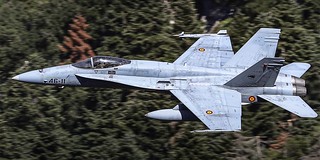The air combat in which an obsolete WWII fighter managed to shoot down a MiG-15 jet
In times when technology seems the most important thing, it is good to remember that the skill of a good pilot can be decisive in a fight.
An example of this occurred during the Korean War (1950-1953). On September 10, 1952, two Chance Vought F4U Corsair fighters of Marine Attack Squadron 312 (VMA-312) of the United States Marine Corps were flying a strike mission. The Corsair was an excellent naval fighter that made its maiden flight in 1940 and entered service two years later in the US Navy and Marines. Its performance made it the best fighter in the Pacific theater of operations, and the Marines also found it to be a good attack and close support aircraft.

However, in 1952 the Corsair, a piston-engined aircraft, was already obsolete due to the appearance of jet fighters such as the North American F-86 Sabre and the Mikoyan-Gurevich MiG-15, so the Marines relegated it to attack missions. In that 1952 mission, the two American pilots, Captain Jesse G. Folmar and Captain Walter E. Daniels, were surprised by eight North Korean MiG-15s. They knew their old Corsairs didn't stand much of a chance against modern, fast fighters, but they were Marines and they set out to meet their enemies. They dropped bombs and rockets to make their planes lighter, and an unusual dogfight began.

Perhaps confident of his numerical and technological superiority, the leader of the North Korean fighters engaged in a "dog fight" through tight turns with Captain Folmar, who was a World War II veteran. Demonstrating his skill as an aviator, Folmar managed to get on the tail of the North Korean fighter and fire a burst at it. The MiG-15 was shot down. It was the first time a Marine pilot had managed to shoot down a plane of this model, and he had done it with an obsolete World War II fighter.

Unfortunately, the North Korean MiG-15s ended up imposing their numerical superiority and Captain Folmar's Corsair ended up being shot down, when one of the enemy fighters managed to destroy its port wing. The American pilot managed to jump out of the plane over the sea after communicating his position by radio. He was rescued shortly thereafter by an American Grumman HU-16 Albatross flying boat. In turn, Captain Daniels managed to get out of the combat unscathed because the MiG-15s focused on the Folmar plane and let his partner escape.

Due to that amazing shot down of a MiG-15, Captain Folmar received the Distinguished Flying Cross. He continued in the Marines until 1959, when he retired after 16 years serving his country, after having participated in two wars and having also won the Purple Heart, the decoration that the United States awards to those soldiers wounded in action. He passed away in Alabama on July 30, 2004, at the age of 83.
The always interesting channel Yarnhub published yesterday an excellent computer recreation of that unusual aerial combat (the video is in English, you can activate the subtitles in Spanish in the bottom bar of the player):
|
Don't miss the news and content that interest you. Receive the free daily newsletter in your email: |
- Most read
- Spain will modernize its fleet of firefighting seaplanes and buy seven new DHC-515s
- Sierra Army Depot, a huge United States base with hundreds of Abrams tanks stored
- United States' last Hueys: Vietnam-era veterans still flying in the US Air Force
- A former secret submarine base in Estonia and its important role in the Cold War
- Eurofighter vs F-35: the opinions of professional pilots on these advanced fighters
- A spectacular video of an Alpha Scramble with Eurofighter aircraft from Spain and Germany
- The firearms used by the Pontifical Swiss Guard, the smallest army in the world

 ES
ES







Opina sobre esta entrada: